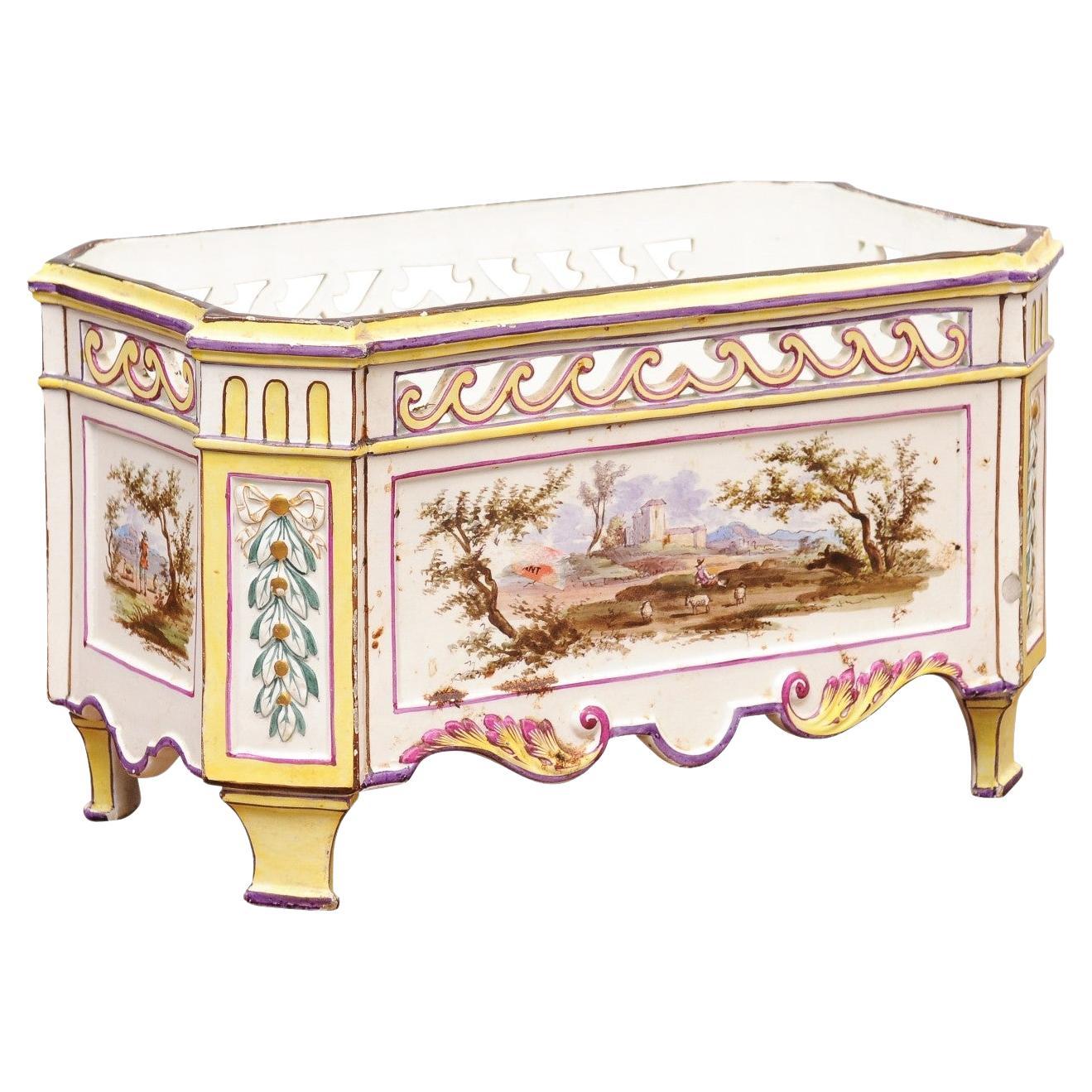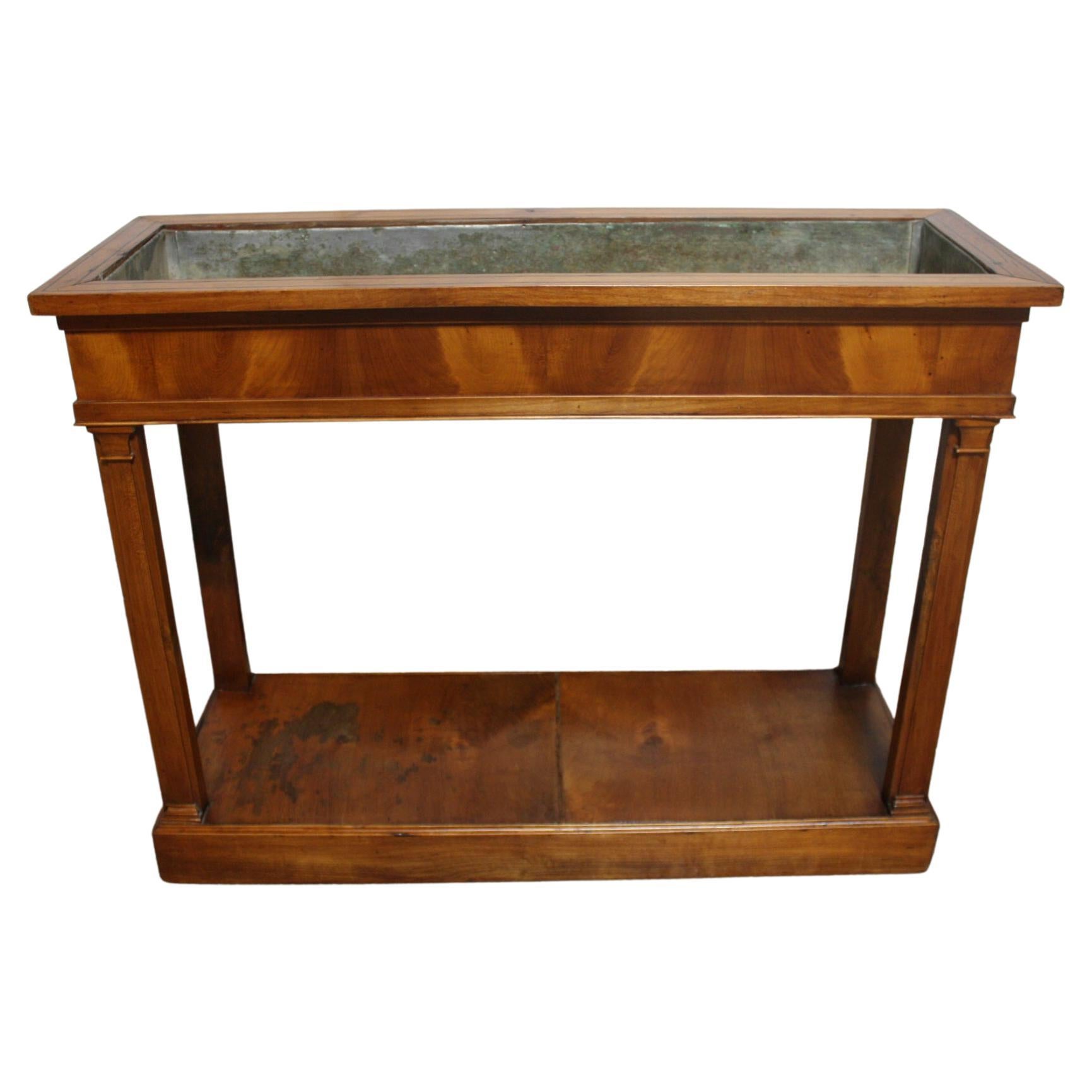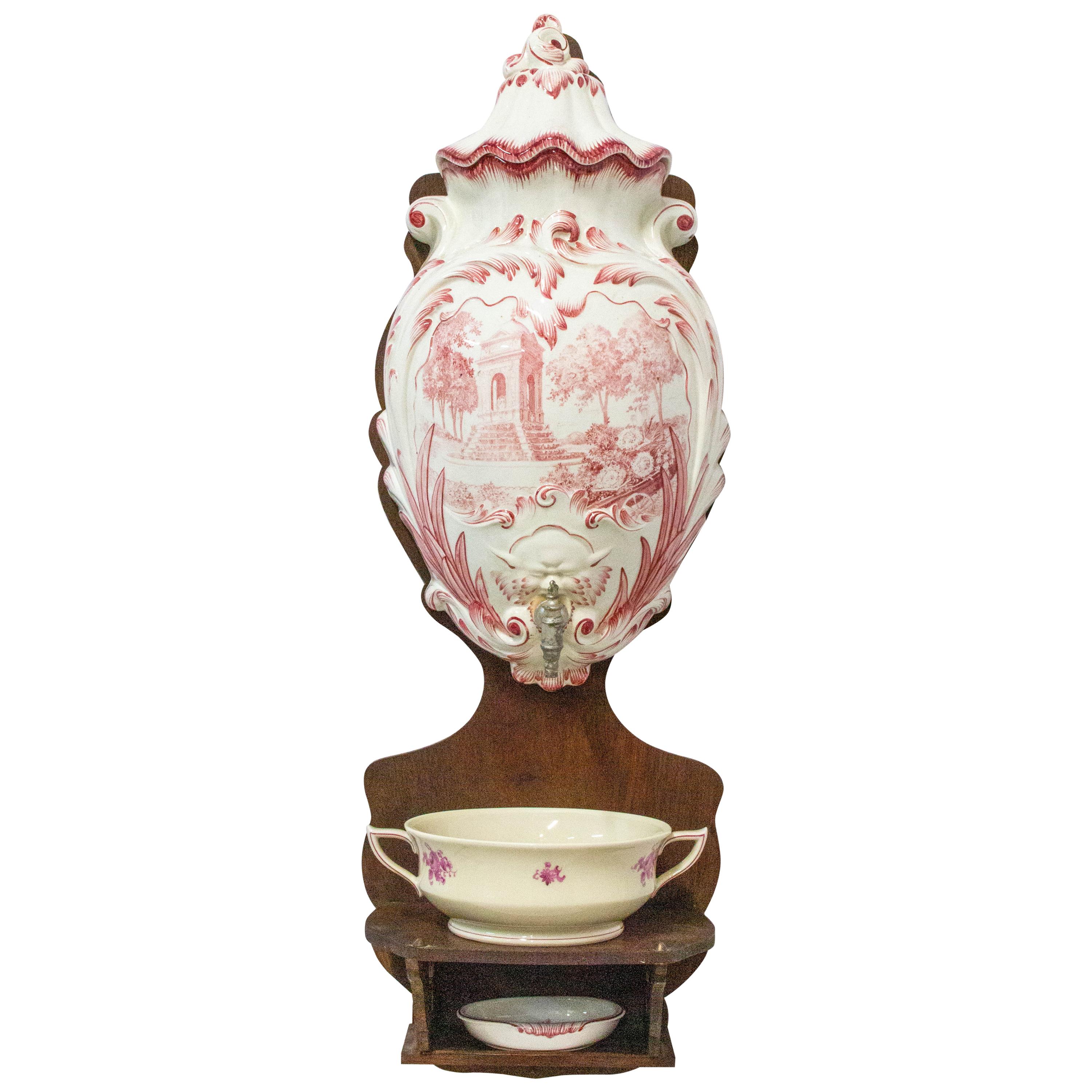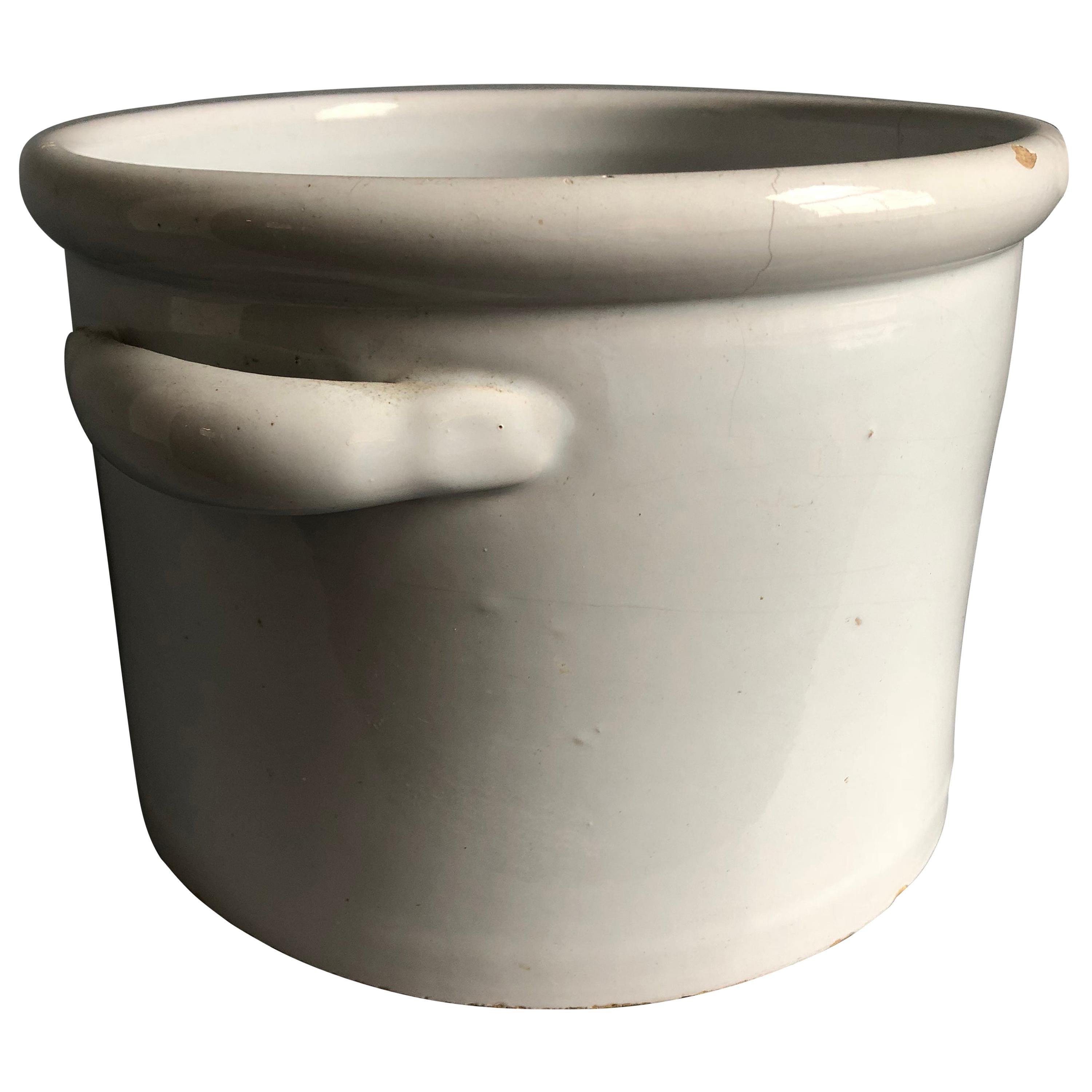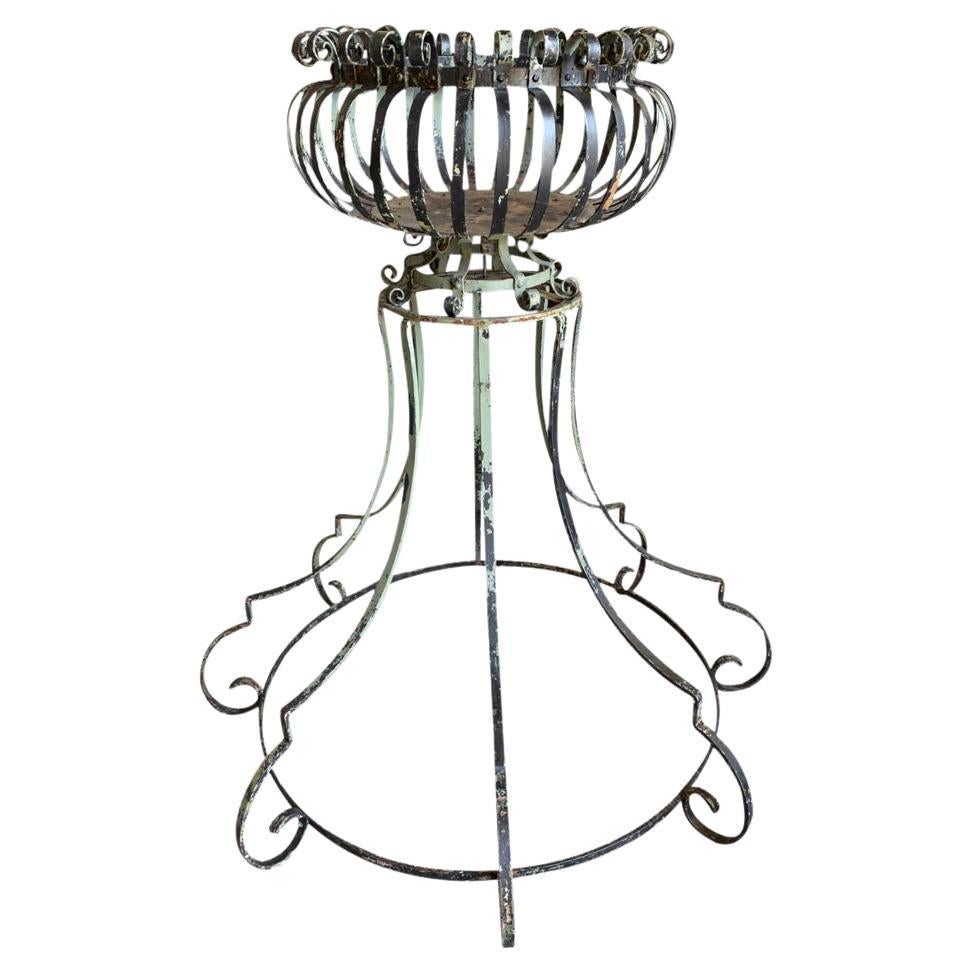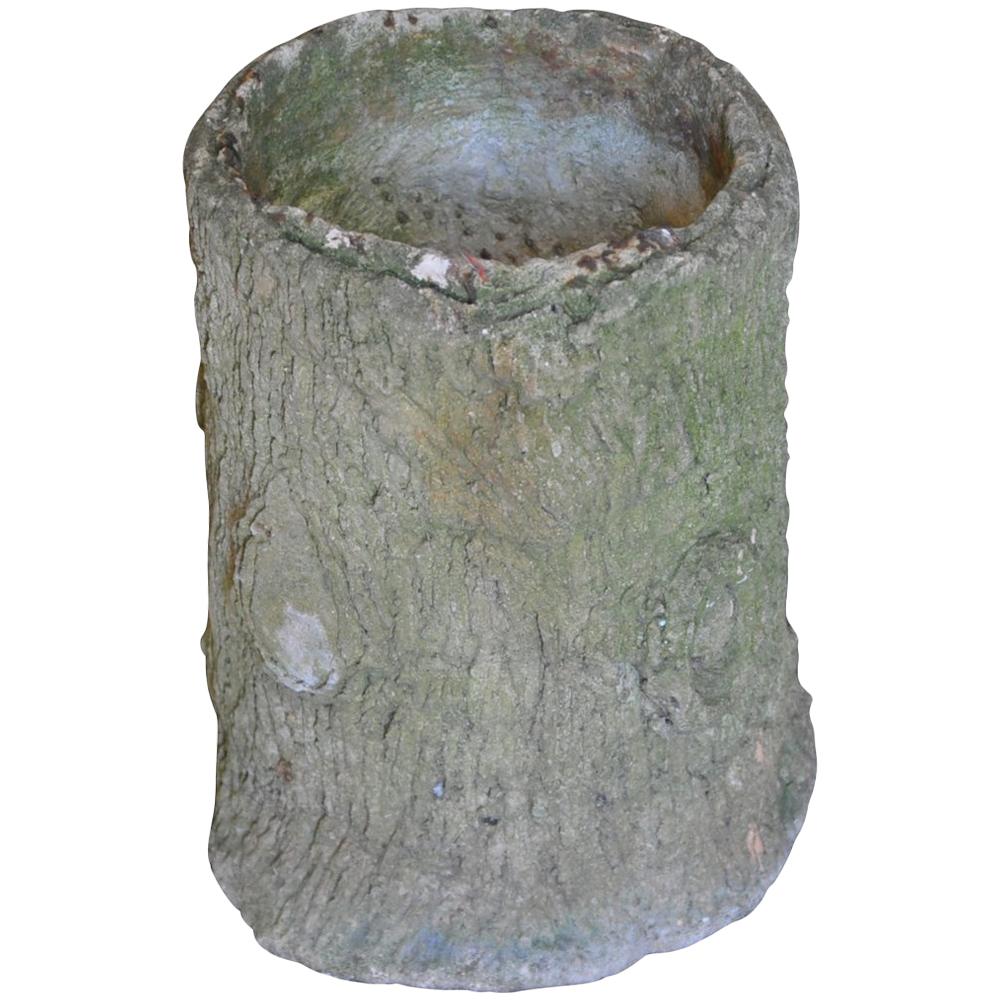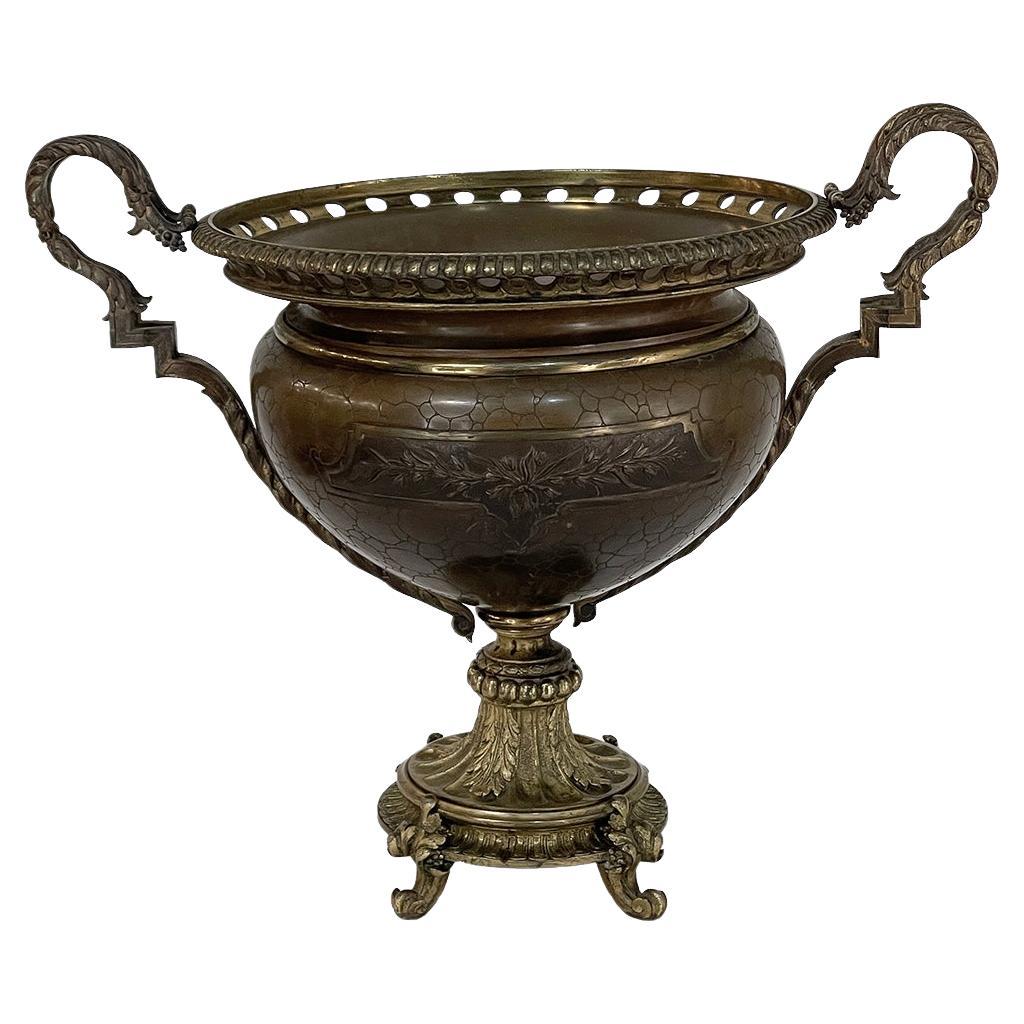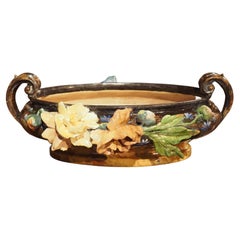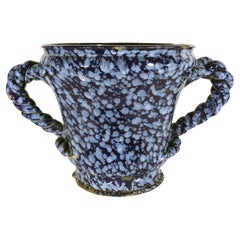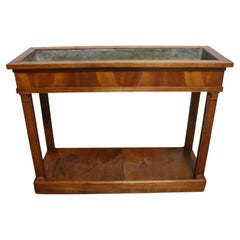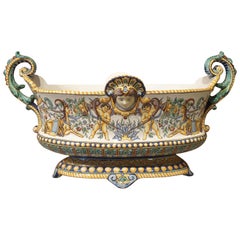
19th Century French Faience Jardinière, Antoine Montagnon, Nevers
View Similar Items
Want more images or videos?
Request additional images or videos from the seller
1 of 20
19th Century French Faience Jardinière, Antoine Montagnon, Nevers
About the Item
- Creator:Antoine Montagnon (Manufacturer)
- Dimensions:Height: 11.625 in (29.53 cm)Width: 21 in (53.34 cm)Depth: 10.75 in (27.31 cm)
- Materials and Techniques:
- Place of Origin:
- Period:
- Date of Manufacture:19th Century
- Condition:Wear consistent with age and use. CONDITION: Good overall condition with minor losses to blues on pedestal portion before glaze. Rubs to first raised motif on handles.
- Seller Location:Dallas, TX
- Reference Number:Seller: 1018-131stDibs: LU906315225591
About the Seller
5.0
Platinum Seller
These expertly vetted sellers are 1stDibs' most experienced sellers and are rated highest by our customers.
Established in 1983
1stDibs seller since 2011
738 sales on 1stDibs
More From This SellerView All
- French “Bleu de Nevers” Faience Smoking Service Tray, by MontagnonBy Antoine MontagnonLocated in Dallas, TXThis lovely French “service fumeur en faïence”, or earthenware smoking service, has five pieces: a tray, and four pots of various sizes. Although every smoking set is unique, we presume theses pots are a tobacco pot to store the dried leaves, an ash receptacle, a pot for holding papers to hand roll cigarettes and/or cigars and a pot for keeping matches. Our set was produced in Nevers, France in the 19th century by Montagnon, the oldest earthenware factory in France. Originally called manufacture du Bout du monde (“End of the World factory”), the factory was founded in 1648. By 1875, the factory had fallen on hard times and was bought by Antoine Montagnon. Within the five years, it was the only faïencerie left in Nevers. Montagnon was successful for over a century but eventually ceased operations in 2015. The production date of our smoking service set is from the late 1800s. Glazed earthenware was introduced from Italy to Nevers in the mid-16th century. The town already had existing porcelain factories and the area was flush with clay deposits that could be used in pottery. This allowed the influx of Italian potters in Nevers to begin producing Faience pieces. For the next 300 years, Nevers was the center for French Faience manufacturing. This smoking set has been decorated with painted birds, rinceaux of flowers and ornamental motifs. The blue background color is called Persian blue, and was extensively used as a ground color on Nevers Faience...Category
Antique Late 19th Century French Delft and Faience
MaterialsFaience
- 19th Century French Barbotine Jardiniere with Gros Relief FlowersLocated in Dallas, TXThe skill and knowledge that was needed to make this beautiful 19th century French barbotine jardiniere is significant. Each of the gros relief flowers was painstakingly formed and painted by hand. Barbotine products are a mixture of Kaolin clay and water and in the case of the attached flowers, they are manipulated into paper-thin fineness. Once the flowers were colored, they were affixed to the side of the jardiniere, glazed, and fired. Any miscalculation during the firing process would result in a restart, negating months of hard work. It is difficult to find an intact barbotine with gros relief flowers due to the fragility. The jardiniere has been painted using gradient colors, with black at the top and golden brown at the molded base. In between those hues is a mottled black and brown background that extends up to the curled volute handles. Blue, pink, yellow, and orange gros relief flowers with attached greenery have been applied over the speckled area. Our barbotine jardiniere with gros relief flowers can be used as originally intended, as a small indoor planter...Category
Antique 19th Century French Planters and Jardinieres
MaterialsClay, Ceramic
- Pair of 19th Century Carved Stone Jardiniere Planters from Dijon, FranceLocated in Dallas, TXThis pair of stone jardiniere planters from Dijon, France, have beautifully thick quarter round edges above the cavetto sides. Because the stones were hand-carved (in the 1800’s), th...Category
Antique 19th Century French Planters and Jardinieres
MaterialsStone
- Antique Painted French Cast Iron Jardiniere, Early 20th CenturyLocated in Dallas, TXStanding on four small volute feet, this painted cast iron jardiniere has a shapely presence highlighted by the undulating opening comprised of volutes and rosettes. From France in t...Category
Early 20th Century French Louis XV Planters and Jardinieres
MaterialsMetal, Iron
- 19th Century French Square Carved Limestone Trough or SinkLocated in Dallas, TXStone troughs have been used to water livestock in rural Europe for many centuries so it’s often difficult to date them. However, it is known that they were replaced by cast iron models in the mid-19th century, placing the creation of this French limestone trough or sink most likely in the early- to mid-1800s. Hand-carved from one piece, the roughly rectangular stone with 3 ¼” thick walls has an interesting, striated palette, most likely indicating that the bottom of the trough was obscured from the elements. The top of the trough has a light gray appearance with areas of light green, orange, and black patina, while the lower section has a white hue with a continuation of the accumulation seen above. Two drainage holes on one side allow the trough to be used as a garden planter or the basin of a courtyard...Category
Antique 19th Century French Planters and Jardinieres
MaterialsStone, Limestone
- 19th Century Hand Painted Faience Jardiniere on Pedestal from Boulogne, FranceLocated in Dallas, TXThis fantastic faience jardiniere and pedestal were hand-painted in Boulogne, France (formally “Boulogne-sur-Mer”) in the late 1800’s. The vibrant set features heraldic displays set among foliate and floral illustrations. Both the pedestal and the jardiniere have white backgrounds festooned with green leaves and blue, yellow, orange, and purple flowers. The opening of the jardiniere has asymmetrical edges dotted by small piercings, with flowering vines painted along the inner rim. Exquisite handles, comprised of curled leaves and C-scrolls, are affixed to the sides of the lobed body. Numerous painted motifs grace the area between the handles, including drapery, scrolls, and floral baskets hanging from an arabesque border. Equally impressive décor can be seen on the tetrapartite stand with a molded top. Each layer of the molding has a different color scheme, ranging from yellow with volute embellishments to solid green. The neck of the stand has been adorned with floral displays above multi-colored scrolls, shells, and scalloped leaves. In the center of each scalloped leaf is a distinct heraldic shield: on one side is a French style shield representing the city of Boulogne, with a swan that symbolizes perfection. On the opposite side is coat of arms topped by a closed crown, emblazoned with a five-fold cross over three roundels, which is the coat of arms for Godfrey of Bouillon, the first ruler of Jerusalem, who was born in Boulogne. Beneath the coat of arms are a pair of scrolled feet adorned with scalloped leaves and scrolls. There are two more feet to the sides that have pierced elements with floral vines beneath. Our 19th century hand-painted faience jardiniere on pedestal...Category
Antique 19th Century French Planters, Cachepots and Jardinières
MaterialsFaience
You May Also Like
- Important French 17th Century Nevers 'Bleu Persan' Faience JardiniereBy NeversLocated in Downingtown, PAFrench 17th Century Nevers 'Bleu Persan' Faience Jardiniere with à la bougie Decoration Circa 1690 The circular Nevers faience jardiniere has two large...Category
Antique Late 17th Century Dutch James II Planters and Jardinieres
MaterialsFaience
- 19th Century French Faience Rectangular Jardiniere with Painted LandscapeLocated in Atlanta, GA19th Century French Faience Rectangular Jardiniere with Painted LandscapeCategory
Antique 19th Century French Planters and Jardinieres
MaterialsFaience
- French 19th Century Directoire JardiniereLocated in Stockbridge, GAThis Directoire Jardiniere is narrow and long and will be wonderful under a window. Very nice and simple line, it can match with any style of furniture.Category
Antique Late 19th Century French Directoire Planters and Jardinieres
MaterialsCherry
- French Faience Wall Fountain, 19th CenturyLocated in Labrit, LandesWall fountain set: original water tank and soap dish and wooden support, lavabo. France, mid-19th century Unseal plant holder Very good condition Shipping: 86 x 18 x 30 cm, 7 kg.Category
Antique Mid-19th Century French Fountains
MaterialsChestnut, Faience
$1,043 / set - French Faience Cache Pot, 19th CenturyLocated in Doylestown, PAA white glazed French Faience “Cache Pot” with handles, circa 1870.Category
Antique 19th Century French French Provincial Delft and Faience
MaterialsFaience
- 19th Century French Majolica jardinière OnnaingBy OnnaingLocated in Austin, TXFrench Majolica jardinière signed Onnaing, circa 1880. Measures: H / 9.3”, 12” by 9”.Category
Antique 1880s French Victorian Planters and Jardinieres
MaterialsCeramic
Recently Viewed
View AllMore Ways To Browse
Majolica Mask
Shallow Planter
Majolica Planter Base
Putti Planter
Majolica Putti
Majolica With Putti
Two Planters
Pair Of Vintage Planters
Plants Used For Building
Jardiniere And Stand
Small Garden Design
Vintage Jardiniere
Patio Urns
Garden Pots And Planters
Planter With Plant
Small Planter
Yellow Garden Furniture
Vintage Jardiniere Planter

